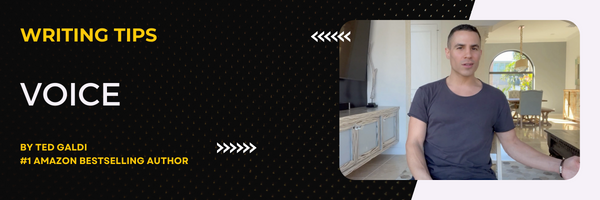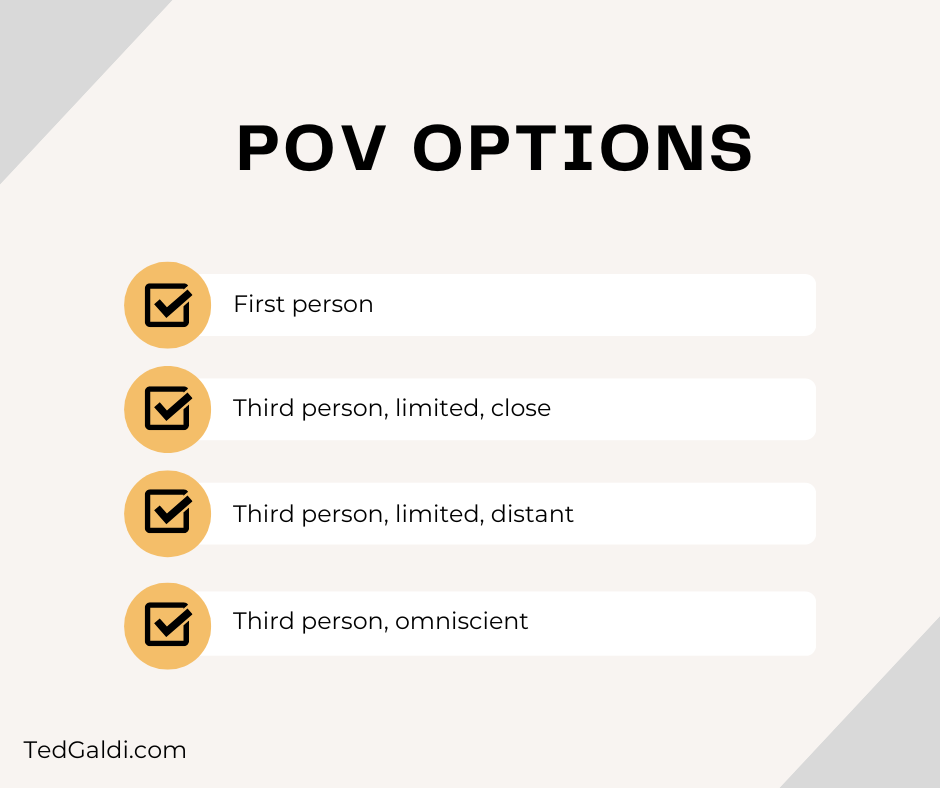First Person vs Third Person POV - Your Unique Writer VoiceA unique writer voice can make your book or screenplay stand out. However, to create a compelling, consistent voice through your story, you need to understand the nuances of point of view (POV), particularly first person vs. third person. Want to write an awesome story? Download my FREE outlining guide. What is a writing voice?A writing voice is the tone a writer uses to tell a story. Though characters can have their own voices, the writing voice refers to the overall voice telling a story. With first-person POV, the voice is that of a specific character. In many other cases, it belongs to no character. Voice is important because it plays a key factor in the style of a story. Is a story told in a sarcastic way that pokes fun at the characters? Or, is that story told in a matter-of-fact fashion that gives the reader information without any direct opinion? These are two drastically different examples that would drastically alter the story's style. If you're trying to capture a certain style, you need to be mindful of voice. And that means you need to be mindful of POV... What is a writing POV?A POV is the perspective a story is told from. The two main options are first person and third. In first, the story unfolds from the perspective of a character, who speaks with "I." In third, various characters can be the subjects of specific scenes, yet they are referred to by name, not "I." POV is important because it helps define voice and style, but also because it plays a major role in how information is delivered to your reader. When writing from the perspective of a subject character, you can only discuss information that character would be aware of - in a given scene, the reader can only know as much as this character. Because of the various nuances associated with POV - which we'll discuss later in this post - writers often make POV mistakes. Unfortunately, these can make you come off as an amateur. As I went over in my post on dialogue writing, publishing-company employees, film producers, and consumers will often only read five or so pages of your story before making a decision to continue or not. If you have a POV error on those opening pages, you'd be giving someone a reason to stop reading. What are the types of POV in writing?As mentioned, the two major POV categories are first person and third. However, within third are various distinctions. The four key POVs:
If you're writing a book, you can choose any of these four POVs. Once you pick one, you need to stick with it through your story, though. Thus, be sure to select the one that'll let you tell your story in the most impactful way. If you're writing a screenplay, you don't have any choice about POV. Scripts tend to be written in third-person omniscient. Below, find a detailed breakdown of the four key POVs. What is first-person POV?
What is third-person, limited, close POV?
What is third-person, limited, distant POV?
What is third-person, omniscient POV?
Leveraging POV for a distinct writing voiceAs mentioned, with first-person POV, your story's overall voice becomes that of the protagonist. With third-person POV, however, the overall voice is fused together by various factor, such as:
Get more writing tips with my free guideYou might also like my posts on descriptive writing and characterization.
0 Comments
Leave a Reply. |



 RSS Feed
RSS Feed